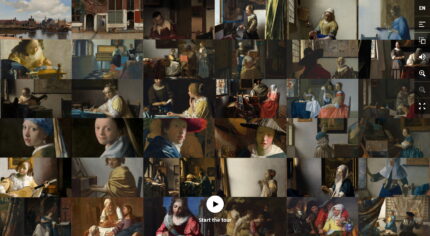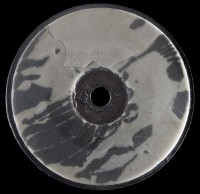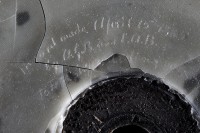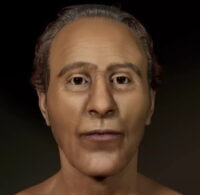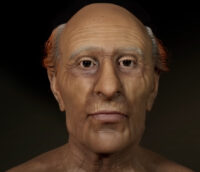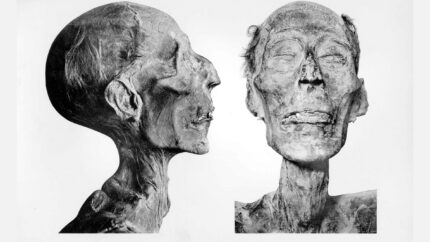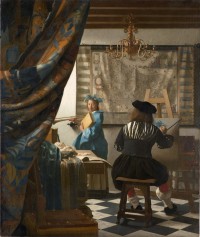 The Rijksmuseum has put together an unprecedented exhibition of works by Johannes Vermeer that will open next month. Only 37 works firmly attributed to Vermeer are known to exist, and 23 of them will be on display in this exhibition. Many of them are on loan from museums around the globe, including The Girl with a Pearl Earring (Mauritshuis, The Hague), Girl Reading a Letter at the Open Window (Gemäldegalerie Alte Meister, Dresden) and Woman Holding a Balance (The National Gallery of Art, Washington D.C.).
The Rijksmuseum has put together an unprecedented exhibition of works by Johannes Vermeer that will open next month. Only 37 works firmly attributed to Vermeer are known to exist, and 23 of them will be on display in this exhibition. Many of them are on loan from museums around the globe, including The Girl with a Pearl Earring (Mauritshuis, The Hague), Girl Reading a Letter at the Open Window (Gemäldegalerie Alte Meister, Dresden) and Woman Holding a Balance (The National Gallery of Art, Washington D.C.).
To accompany the exhibition the Rijksmuseum has crafted an exceptional virtual exploration of all of Vermeer’s paintings. It truly is an exploration, a guided tour of Vermeer’s oeuvre that takes the fullest possible advantage of digital technology to give viewers an in-depth view of each of his 37 known paintings. The English language narration is by Stephen Fry who, as seen in his TV documentary series, is an outstanding tour guide.
The intro opens with a tiled screen of thumbnails of every painting by Vermeer. Each thumbnail is clickable if you’d like to peruse specific works, but I highly recommend the tour because it does a masterful job of putting the paintings in the context of Vermeer’s life and evolution as an artist.
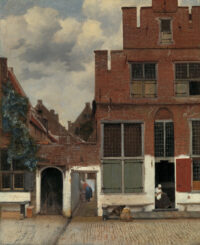 The exhibition divides Vermeer’s work into 13 chapters with unifying motifs. The tour begins with “Into the City,” exploring the View of Delft and The Little Street and placing Vermeer’s artistry in the context of the city where he was born, lived and worked. I really enjoyed this section because it’s a walk-through of the 17th century city as seen through Vermeer’s landscapes. Fry identifies some of the buildings as we go along and then segues neatly into The Little Street through the cloudy sky they have in common.
The exhibition divides Vermeer’s work into 13 chapters with unifying motifs. The tour begins with “Into the City,” exploring the View of Delft and The Little Street and placing Vermeer’s artistry in the context of the city where he was born, lived and worked. I really enjoyed this section because it’s a walk-through of the 17th century city as seen through Vermeer’s landscapes. Fry identifies some of the buildings as we go along and then segues neatly into The Little Street through the cloudy sky they have in common.
Girl with the Pearl Earring is in Section 8, The Look of Seduction, which groups her with three other Vermeer beauties with soft eyes and glistening lips. They are all “tronie” portraits, a type of study painting with fantasy elements of lighting, expression and clothing that painters created as workshop exercises. There was no actual sitter. All four of Vermeer’s tronies are wearing pearl earrings and unusual headgear.
You can jump around through the chapters by hovering over the right side of the screen and navigating the menu or you can just let it ride and go in order. Either way, it’s easy to pick up where you left off, and you might very well have to do because there is so much to see for an artist with such a small total output.
This is one of the best virtual exhibitions I have ever seen, and I have seen a lot of them. It is written in a personable, light-hearted style that still manages to be incredibly information-rich. The way they zoom into the detail of the paintings to illustrate the commentary is flawlessly paced and takes full advantage of the ultra-high resolution photographs. Fry explains changes Vermeer made based on the most recent imaging and research into his process. There are also annotated areas of each painting which you can click on for a shot of additional information. The notes open in windows that have click-through images, so every note is really multiple notes. Then when you’re done exploring the nooks and crannies, you click back to the main tour and the narration picks up where you left off. Whoever designed this is a content management genius, seriously.
